- Learning time
- 20 minutes
- First play time
- 60 minutes
Azul: Summer Pavilion
Designed by: Michael Kiesling
Inspired by the original Azul, Azul: Summer Pavilion follows a similar path of gathering tiles and placing them on a board in order to score points. It’s actually the third in a trilogy of very pretty abstract games – Azul: Stained Glass of Sintra being the second. But you don’t need to have played the others.
Each player has their own board, upon which you will place tiles over the six rounds of the game. There is an additional scoreboard that also hosts several bonus tiles. In the centre of the table are placed a number (how many depends on the number of players) of factories, laid out in a circle. Four tiles are added to each factory at the start of every round, and the ‘1’ tile goes in the middle.
Play is actually quite simple: on your turn, you take all the tiles of a single colour from one of the factories, and push any left over into the middle of the circle. In every round one colour tile will be wild: if there are any wild tiles present, you may take one of them as well. Note that wild tiles can only be taken one at a time, so you can’t grab a whole bunch of them.
The centre area, once any tiles have been added, effectively functions as an extra factory, but with an important caveat. The first person who takes tiles from this factory moves back one point per tile taken on the scoretrack. On the other hand, you will also take the ‘1’ tile and will choose first in a subsequent round.
Once all tiles have been claimed from all factories, players then take turns adding them to their boards. Tiles must be placed on their matching colours, and you’ll notice that each space has a number on it: this is the number of tiles you must ‘pay’ to put a tile there. A one is simple: plonk the tile down. A six means paying five tiles of the matching colour (or wilds) into the game’s tower (- its only function is to collect tiles) and placing the sixth on your board. There’s also a central star with no colour denomination: all colours can be placed here, but crucially, only one of each. As you add tiles, two things happen: firstly, every tile added scores itself (1 point) plus every connected tile in the same star (up to 6 points). The other thing that occurs is bonus tiles being triggered: when you surround bonus spaces they activate, and you can – in fact, you must – collect extra tiles from the display on the scoreboard.
You may keep up to four tiles between rounds, but otherwise tiles are added until none are left to add and a new round begins: the factories are replenished, and a new colour will be wild. After the sixth round, there is some final scoring where players pick up points for completing any stars or covering up all of the numbers from 1-4: the higher the number, the higher the points reward. Players also lose points for tiles they cannot place, and then the player with the highest-scoring ‘pavilion’ is the winner!
Joe says
The original Azul is an impeccable piece of design in my opinion, and based on what I've heard about this I'm not interested in playing.
The guru's verdict
-
Take That!
Take That!
A sliver. You can see what other tiles people are after and make spoiling moves, and there are times when making a sub-optimal move for your own board prevents a bit score for someone else. But it depends how you want to play it.
-
Fidget Factor!
Fidget Factor!
Moderate. The rules are very simple - take tiles, place tiles. But as with the original Azul, there is some depth to the decision-making...
-
Brain Burn!
Brain Burn!
...depth enough to make the game not so much a procession as a moving puzzle.
-
Again Again!
Again Again!
The variety in play here comes from both the random tile draw, and the decisions of the players. There are certainly different strategies to pursue.





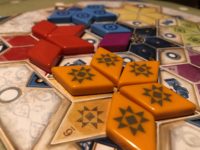
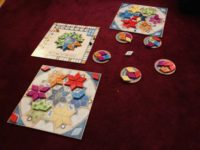


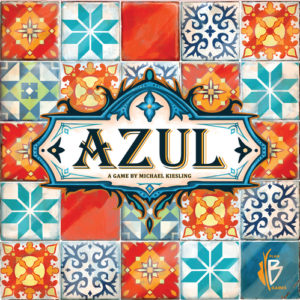
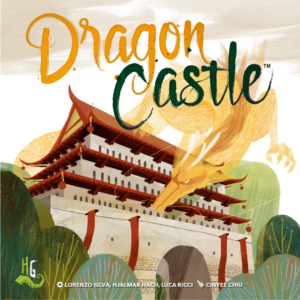
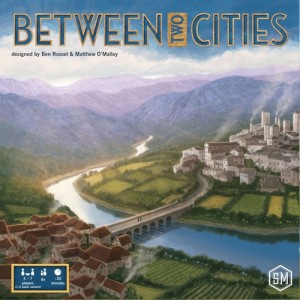
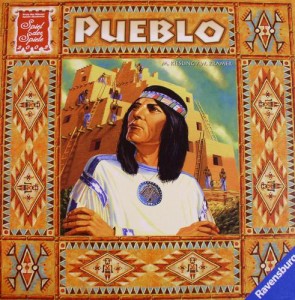

Sam says
The game looks stunning on the table. The tiles are beautiful and the rules are simple enough that it's accessible to kids from 8 and up, I would say. Like the original, you balance long and short-term rewards, and played competitively, need to keep an eye on what others are doing on their boards. But here you have the extra elements of the wilds and the bonus tiles. That's intriguing, but it does come at a price: these extras do push the play-time a bit longer and also give you a bit more to puzzle over. Triggering bonuses is nice, but although I think Summer Pavilion is very good (particularly for two), there is something about the simplicity and elegance of the original that makes 'vanilla' Azul still, to me, the better game: less fiddliness over scoring, and more interesting dynamics over play.